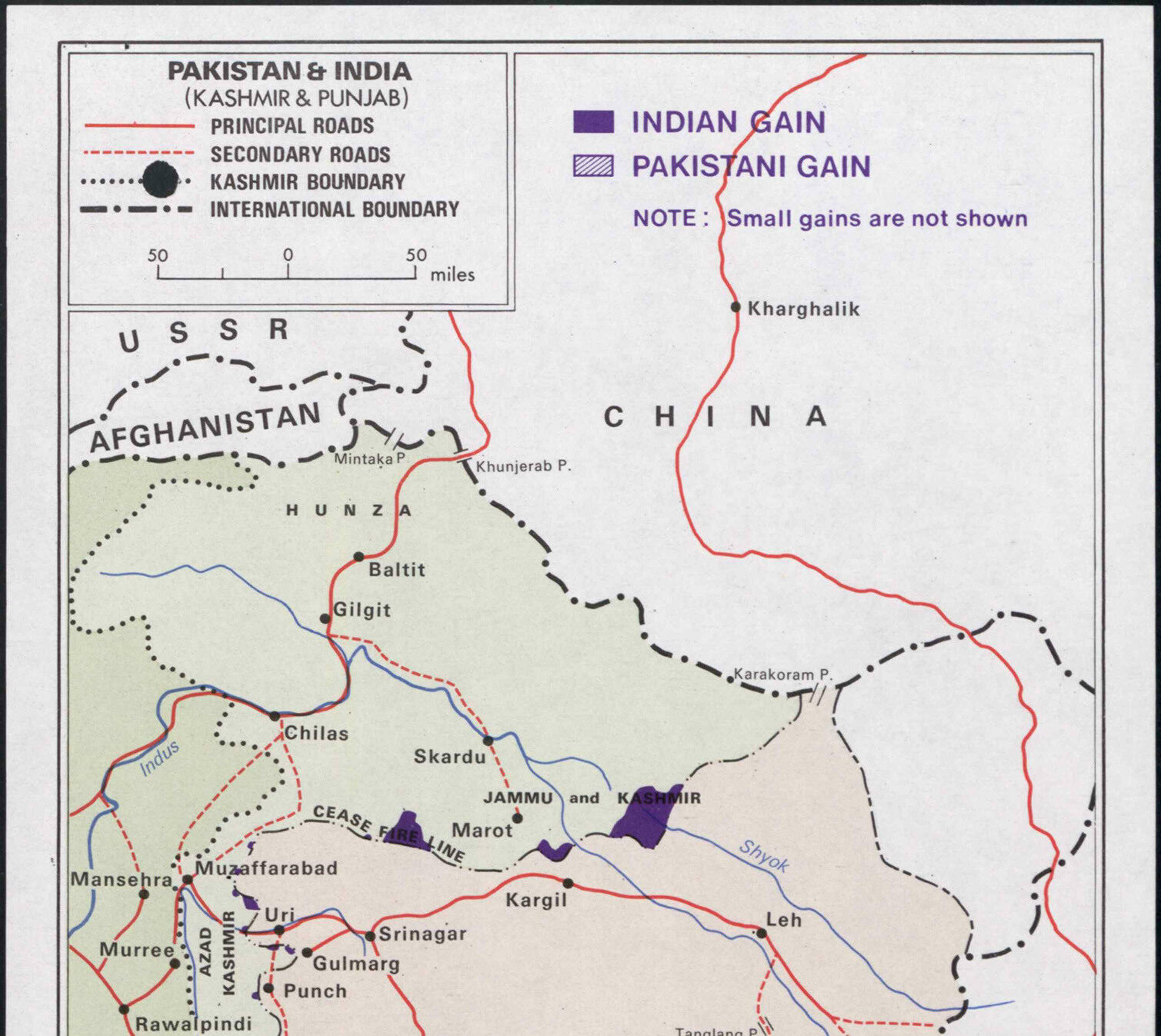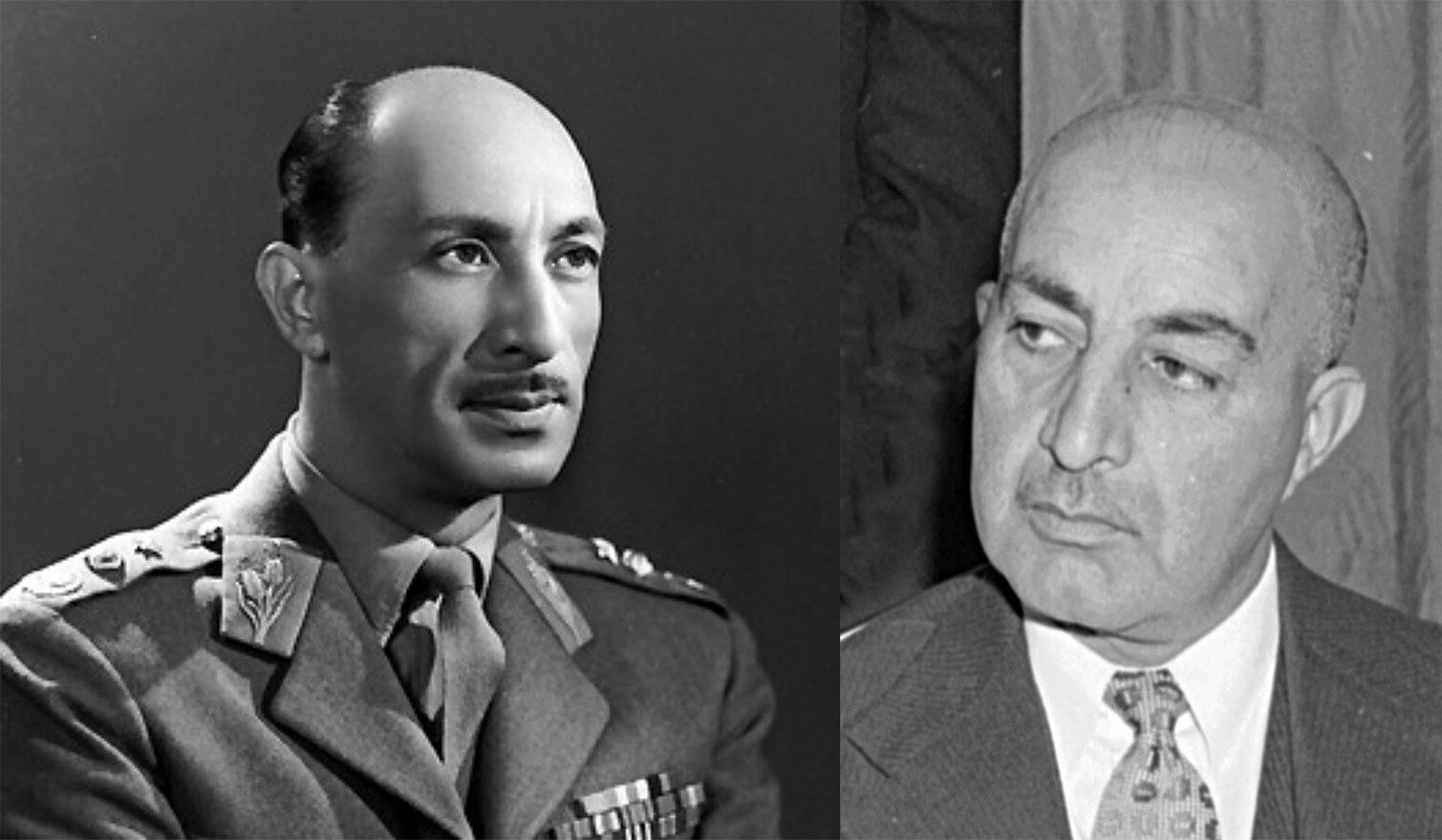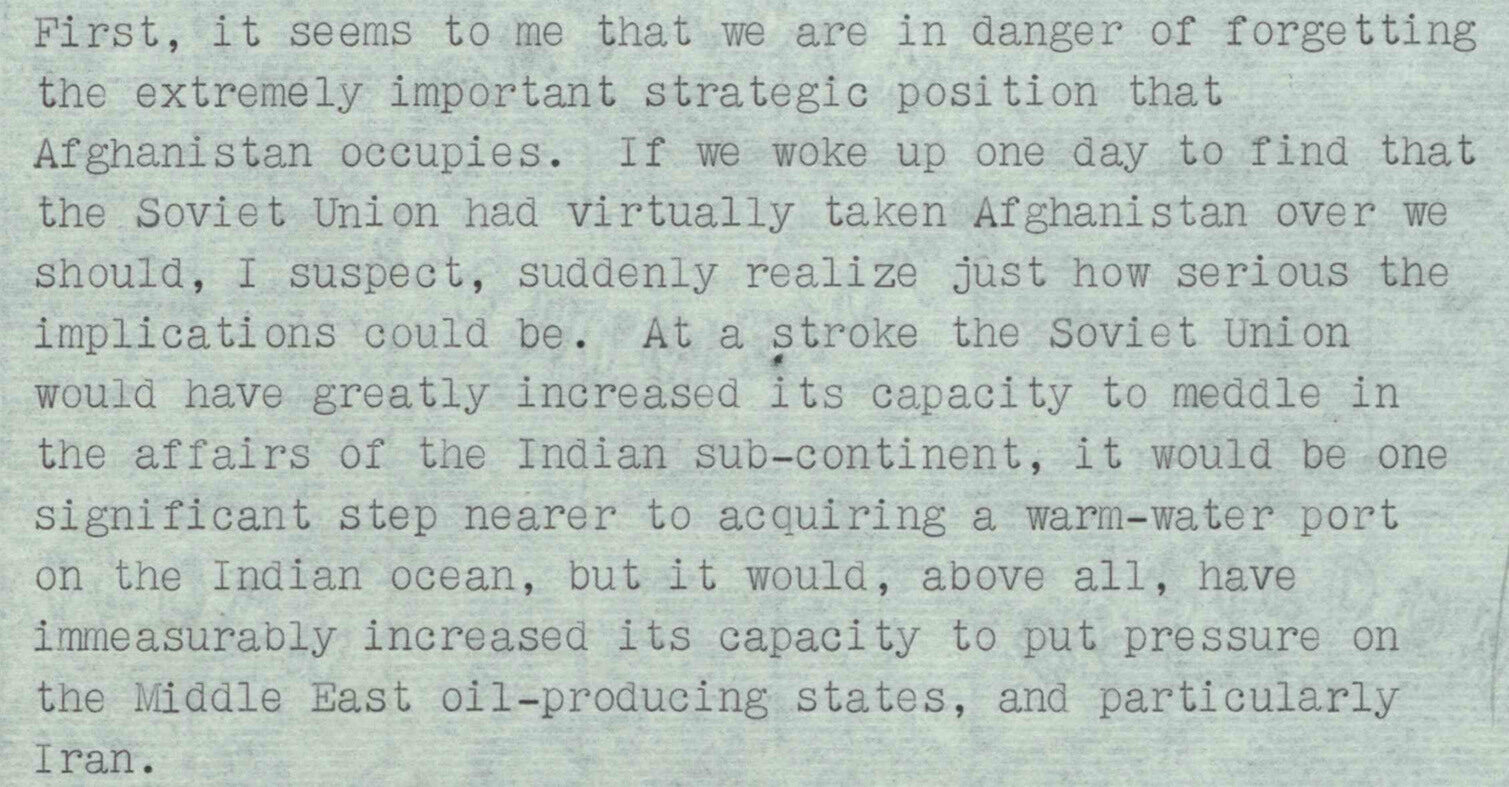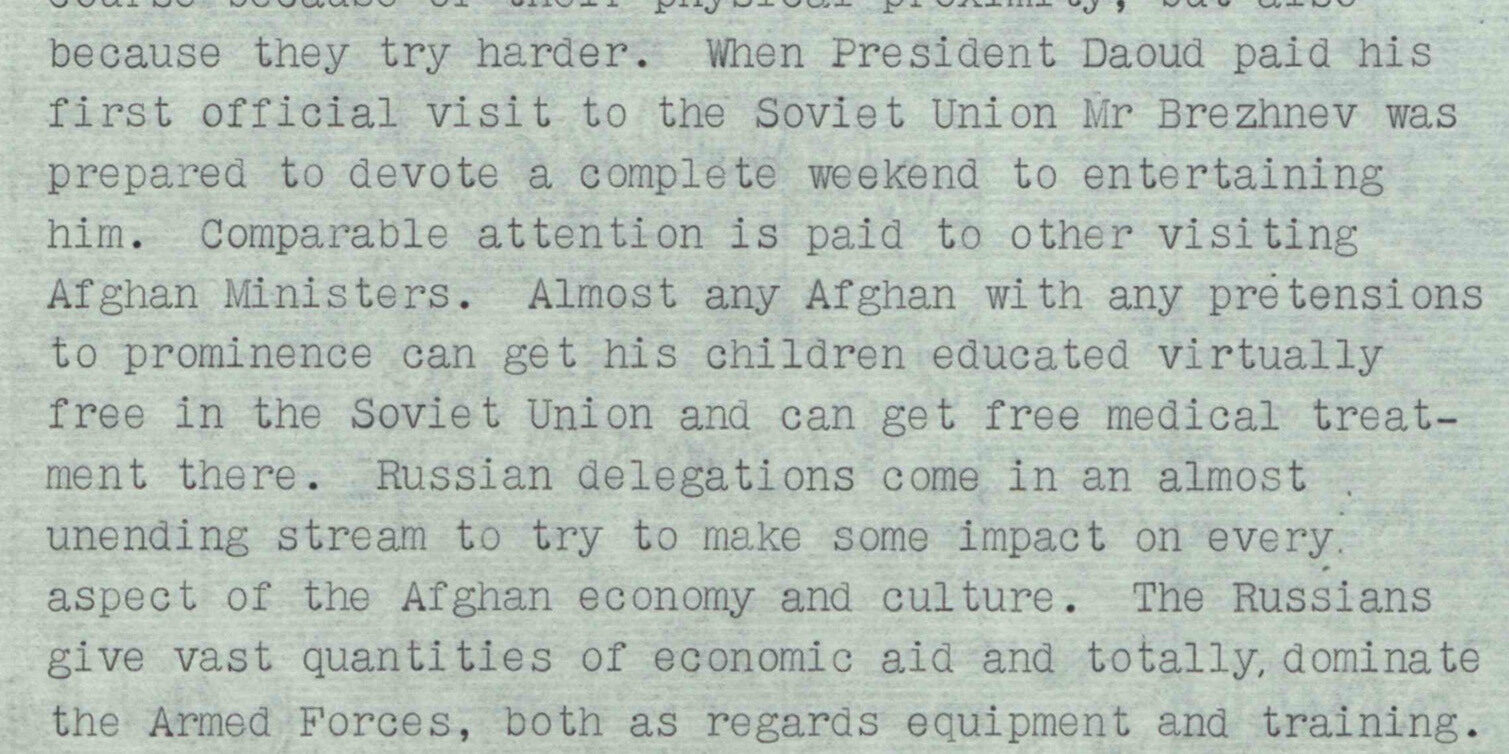The Great Game Revisited: Afghanistan In The 1970s

A 1971 map (from FCO 37/1154) showing the Wakhan Corridor of Afghanistan. Agreements between Russia and British India in 1873 and 1893 established the corridor as a buffer between the two empires. Image © The National Archives, UK. Further reproduction prohibited without permission.
It was in the early 1970s that Afghanistan entered into the spiral of governmental instability, insurgency, outright civil war and foreign interventions that has plagued it to the present day. Amongst the dozens of Afghan-focused files in our resource Foreign Office Files for India, Pakistan and Afghanistan two which date from the regime of Mohammad Daoud Khan, president from 1973 to 1978, shed light both on the circumstances under which he came to power, and, with considerable prescience, on the potential for instability and Soviet intervention, which it was feared might follow the end of his rule.

King Zahir Shah (left) and Mohammad Daoud Khan (right) (image: James A. Cudney).
Daoud Khan was of royal birth, the cousin of King Zahir Shah, and had served as prime minister between 1953 and 1963. After a political crisis caused by a border dispute with Pakistan Daoud was forced from office, and Afghanistan entered a period of ineffectual pseudo-parliamentarism, with six prime ministers coming and going over the next decade at the king’s behest. In July 1973 Daoud, backed by the army, overthrew Zahir whilst he was abroad. In a dispatch to London the following month the British ambassador in Kabul, John Drinkall, mused on the reasons for Zahir’s downfall, and placed the blame squarely on his own and his family’s shoulders. Having acknowledged that the king was “a very nice person and seemed genuinely to have the welfare of his people at heart”, Drinkall went on to catalogue the whole dynasty’s failings:

From John Drinkall's report 'Afghanistan: Fall of the monarchy', 7 August 1973 (FCO 37/1218). Image © The National Archives, UK. Further reproduction prohibited without permission.
The only member of the royal family to escape censure was the king’s elder daughter, Princess Bilqis, whom Drinkall described as “as remarkable as the others are not”. But it was not plausible that a woman should succeed to the Afghan throne, and anyway the political system had been broken. Although the average Afghan’s expectations of the state were so nugatory that general discontent could not have led to revolution, a sense of chronic frustration with the regime’s shortcomings amongst powerful figures in the bureaucracy and army had provoked a change of personnel at the top – something which his embassy had, Drinkall claims, been predicting for some years, with the result that “the British reputation for omniscience in this part of the world is now in the process of receiving an additional fillip”.
Yet the next question which would soon occupy British minds was: who, or what, would follow Daoud? By the time Drinkall was preparing to leave Kabul, in January 1976, Daoud’s regime, though apparently secure, had not yet been formalised; the government would announce consultations on a new constitution only that March. But Drinkall’s biggest worry harked back to the Great Game of the nineteenth century:

From 'Afghanistan: Valedictory despatch' by John Drinkall, 20 January 1976 (FCO 37/1685). Image © The National Archives, UK. Further reproduction prohibited without permission.
Fortunately for the West, the Russians were not liked by the Afghans. But they succeeded in penetrating the ruling stratum of the country because they made more effort than anyone else:

From 'Afghanistan: Valedictory despatch' by John Drinkall, 20 January 1976 (FCO 37/1685). Image © The National Archives, UK. Further reproduction prohibited without permission.
This assessment was a shrewd one. Daoud was overthrown and killed in July 1978 by the communist People’s Democratic Party. But the infighting that proved rampant in the new regime, and the armed opposition its actions generated in much of the country, was such that a full-scale Soviet invasion was launched to shore it up over Christmas 1979.
Despite the overwhelming nature of the Soviets’ conventional strength, opposition to them was as determined as it had been to the Afghan communists. By the time of the invasion there were 400,000 Afghan refugees in camps in Pakistan, where the authorities provided them with training and equipment to return home to fight; the CIA had already mounted Operation Cyclone, its own effort to help arm, train and inspire the opposition. Until they left Afghanistan in 1989 the Soviets never succeeded in gaining secure control of any areas beyond the major cities, and Afghanistan was flooded with the weapons, expertise and dislocation which have helped fuel the civil wars with which the country has been battered up to the present day.
Recent posts

The blog highlights American Committee on Africa, module II's rich documentation of anti-apartheid activism, focusing on the National Peace Accord, global solidarity, and student-led divestment campaigns. It explores the pivotal role of universities, protests, and public education in pressuring institutions to divest from apartheid, shaping global attitudes toward social justice and reform.

This blog examines how primary sources can be used to trace the impact of young voices on society, particularly during pivotal voting reforms in the UK and the US. Explore materials that reveal insights into youth activism, intergenerational gaps, and societal perceptions, highlighting their interdisciplinary value for studying youth culture, activism, and girlhood across history.
